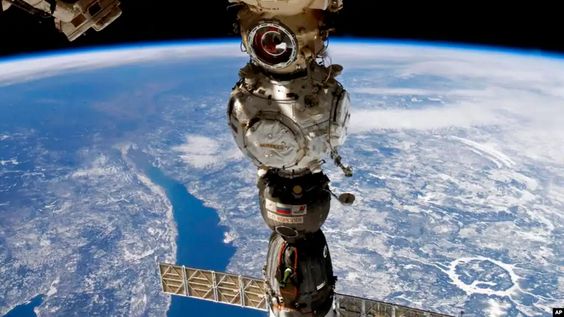World
Russia is considering an early return of the space station crew following Soyuz capsule leak

After a coolant leak in their Soyuz capsule while it was attached to the orbiting outpost, Russia’s space agency said it is looking into a plan to send an empty spacecraft to the International Space Station (ISS) to bring three crew members home early.
At a news conference on Thursday, representatives from Roscosmos and NASA said they were still looking into how the coolant line of the capsule’s external radiator developed a minor hole last week, just as two cosmonauts were getting ready for a routine spacewalk.
The exact method of returning the three crew members to Earth is still up in the air. Options include sending another Soyuz to get them or, maybe less likely, sending them back in the leaky capsule without most of its coolant.
The leak may have been triggered by a micrometeoroid strike, according to Sergei Krikalev, director of Russia’s crewed space projects, who made this statement last week. However, he has left open the potential of alternative offenders, such as a hardware malfunction or a collision with a tiny piece of space debris.
On December 14, a live NASA broadcast showed what looked like snowflakes coming out of the back of the Soyuz spacecraft. This caused mission controllers in Moscow to cancel the spacewalk.
The leak, which persisted for hours, completely drained the radiator that controlled the temperature in the crew cabin of the spaceship.
According to NASA, none of the ISS crew members were ever at risk as a result of the leak.
Sergey Prokopyev, Dimitri Petelin, and Frank Rubio went to the ISS in September on the damaged Soyuz MS-22 spacecraft. At the time, Sergey and Dimitri were getting ready for a spacewalk.
Krikalev and NASA’s ISS program manager Joel Montalbano said Roscosmos would send them to Earth two to three weeks earlier if Russian space officials decided to launch an empty crew capsule for their recovery. Originally, they were supposed to return on the same ship in March.
Four additional ISS crew members—two more from NASA, a third Russian cosmonaut, and a Japanese astronaut—arrived at the station in October on a SpaceX Crew Dragon that NASA contracted for them. They are still there, with their capsule parked at the station.
The leak has messed up Russia’s plans for the ISS for the next few weeks. As a result, Roscosmos has had to cancel all upcoming spacewalks while Moscow officials fix the leaking MS-22, which is the main lifeboat for the station’s three crew members in case of an emergency.
NASA says that two American astronauts, Rubio and Josh Cassada, put up a new roll-out solar array outside the space station during a seven-hour spacewalk on Thursday. There were no problems.
Another Soyuz capsule scheduled to transport Russia’s next crew to the station in March would instead “be sent up unmanned to have a healthy vehicle on board the station to be able to rescue crew,” Krikalev, Roscosmos’ executive director for human spaceflight, told reporters. If MS-22 is deemed unsafe to transport crew members back to Earth,
There was no discussion of perhaps deploying a backup SpaceX Dragon to retrieve the crew.
Identifying the leak’s origin can be important when deciding how to repatriate crew members.
The recent Geminid meteor shower appeared to increase the likelihood of a micrometeoroid strike being the cause, but Montalbano said the leak was looking in the incorrect direction for that to be the case. However, a space rock may have come from another direction.
Given how important the coolant system is for keeping the crew compartment of the capsule from getting too hot, and how Montalbano and Krikalev said it was being vented through an open hatch to the ISS, sending the damaged MS-22 back to Earth without being fixed with people inside seemed like a bad idea.
Reuters
